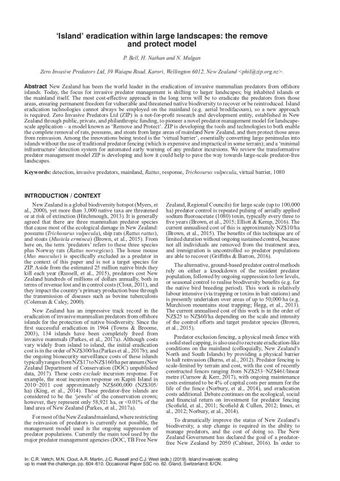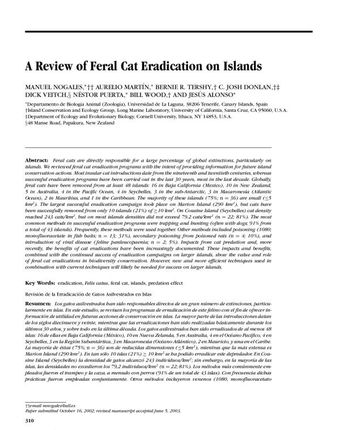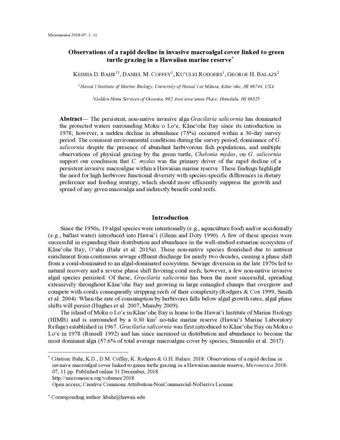Predation of sea turtle eggs by rats and crabs
- Description:
- Egg predation by invasive and native species may have severe impacts on endangered species and negatively affect species recovery. We assessed the levels of egg predation within green turtle (Chelonia mydas) clutches on the island of Diego Garcia (7.42°S, 72.45°E), Chagos Archipelago (Indian Ocean). Native coconut crabs (Birgus latro) and ghost crabs (Ocypode spp.), as well as introduced black rats (Rattus rattus), were predators of eggs, with these species entering nests via tunnels dug obliquely in the sand. Often whole eggs were removed from clutches. For example, the mean clutch size at oviposition (mean 127.8 eggs, n = 23, range = 74–176) was significantly larger than at the end of incubation (mean 110.9 hatched and unhatched eggs, n = 16, range = 9–147). In other cases, egg predation was recorded where the egg had been opened and contents were eaten in the nest. Overall, hatching success (the percentage of eggs laid leading to a hatchling emerging from the egg) was 64.9%, while 3.1% of eggs were predated within nests, 18.1% died during incubation without predation and 13.9% were removed. We reviewed evidence from 34 sites around the world identifying 36 predators that were either native (e.g., crabs, and goannas, n = 30) or invasive (e.g., rats, and pigs, n = 8). Depending on location, a predator could be identified as both native and invasive (e.g., dogs). We discuss how either nest protection and/or invasive predator eradication may be used to increase egg survival and when these approaches might be used.
- Display date:
- 2023
- Location:
- Pacific Region
- Collections:
- Secretariat of the Pacific Regional Environment Programme (SPREP)
- Publisher:
- Springer
- Content partner:
- Secretariat of the Pacific Regional Environment Programme (SPREP)
- Availability:
- Not specified
-
Copyright status: All rights reservedFind out more about what you are able to do with this itemThis item is all rights reserved, with means you'll have to get permission from Secretariat of the Pacific Regional Environment Programme (SPREP) before using it. For more information, please see our use and reuse page.What can I do with this item?Non-infringing useNZ copyright law does not prevent every use of a copyright work, and this item may be hosted by an international institute or organisation. You should consider what you can and cannot do with a copyright work.No sharingYou may not copy and/or share this item with others without further permission. This includes posting it on your blog, using it in a presentation, or any other public use.No modifyingYou are not allowed to adapt or remix this item into any other works.No commercial useYou may not use this item commercially.
Related items
Welcome and warm Pasifik greetings
The information on this site has been gathered from our content partners.
The names, terms, and labels that we present on the site may contain images or voices of deceased persons and may also reflect the bias, norms, and perspective of the period of time in which they were created. We accept that these may not be appropriate today.
If you have any concerns or questions about an item, please contact us.


